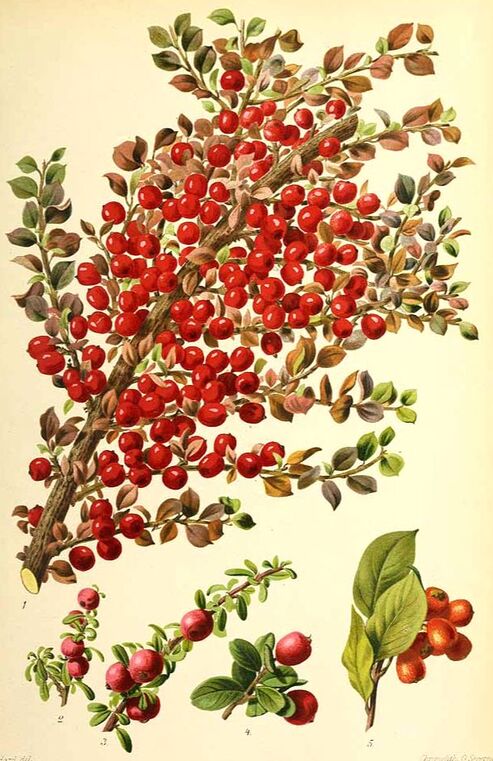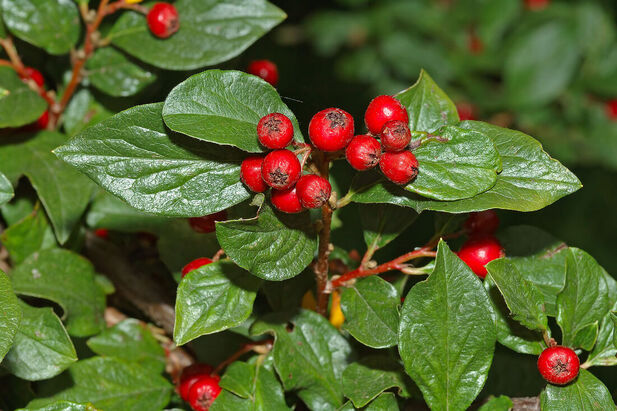Sentry Page Protection
Cotoneaster, Tshar 'brum ཚར་འབྲུམ་
Cotoneaster
Tshar 'brum (fruit), Tshar pa dkar po (Tibet)
Tshar 'brum (fruit), Tshar pa dkar po (Tibet)
Cotoneaster acuminatus
Revue horticole, sér. 4, Vol 61 (1889)
Revue horticole, sér. 4, Vol 61 (1889)
Botanical name:
Cotoneaster spp.
Three types are mentioned in Tibetan texts: 1. Black type; 2. White type; 3. one growing on 'high rocks'
Parts used:
Fruit
Temperature & Taste:
Cool, dry. Sweet, Sour
Classification:
Cotoneaster spp.
Three types are mentioned in Tibetan texts: 1. Black type; 2. White type; 3. one growing on 'high rocks'
- C. acuminatus (syn. C. bakeri, C. nepalensis, C. royleanus, C. roylei, Mespilus acuminata) Tshar pa dkar po
- C. microphyllus
- C. melanocarpus (Black-fruited variety, used in Nepal)
- Pyracantha crenulata
Parts used:
Fruit
Temperature & Taste:
Cool, dry. Sweet, Sour
Classification:
Uses:
1. Clears Heat, Stops Bleeding:
-excess Menstruation, spotting
-said to be very useful for other types of bleeding such as blood in the stool
-twigs and leaves also stop Bleeding
2. Clears Damp-Heat:
-Diarrhea, Gastritis, Colitis
-used for damp accumulating in the joints of the extremities
-in Unani the root decoction is used for Joint pain
Roots have an Anti-hypertensive effect
Dose:
Some texts suggest the best method is to prepare a concentrated decoction from the ripe fruit. If this is not possible, the dried fruit can be used.
Decoction: 3–9 grams
Powder: 1–3 grams
Some texts suggest the best method is to prepare a concentrated decoction from the ripe fruit. If this is not possible, the dried fruit can be used.
Decoction: 3–9 grams
Powder: 1–3 grams
Main Combinations:
Major Formulas:
Cautions:
Toxic in overdose. Contains cyanogenic glycosides.
Main Preparations used:
Toxic in overdose. Contains cyanogenic glycosides.
Main Preparations used:


